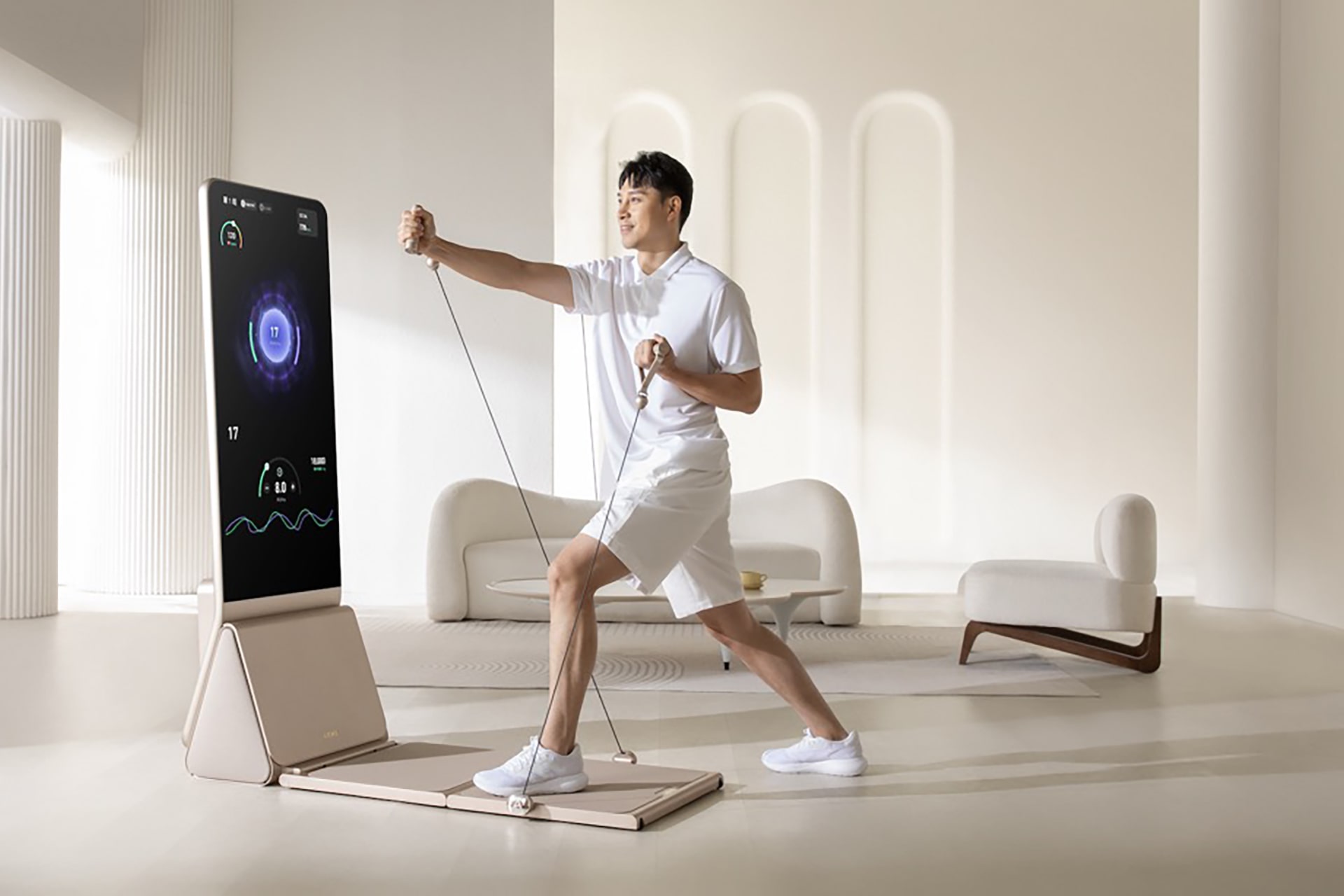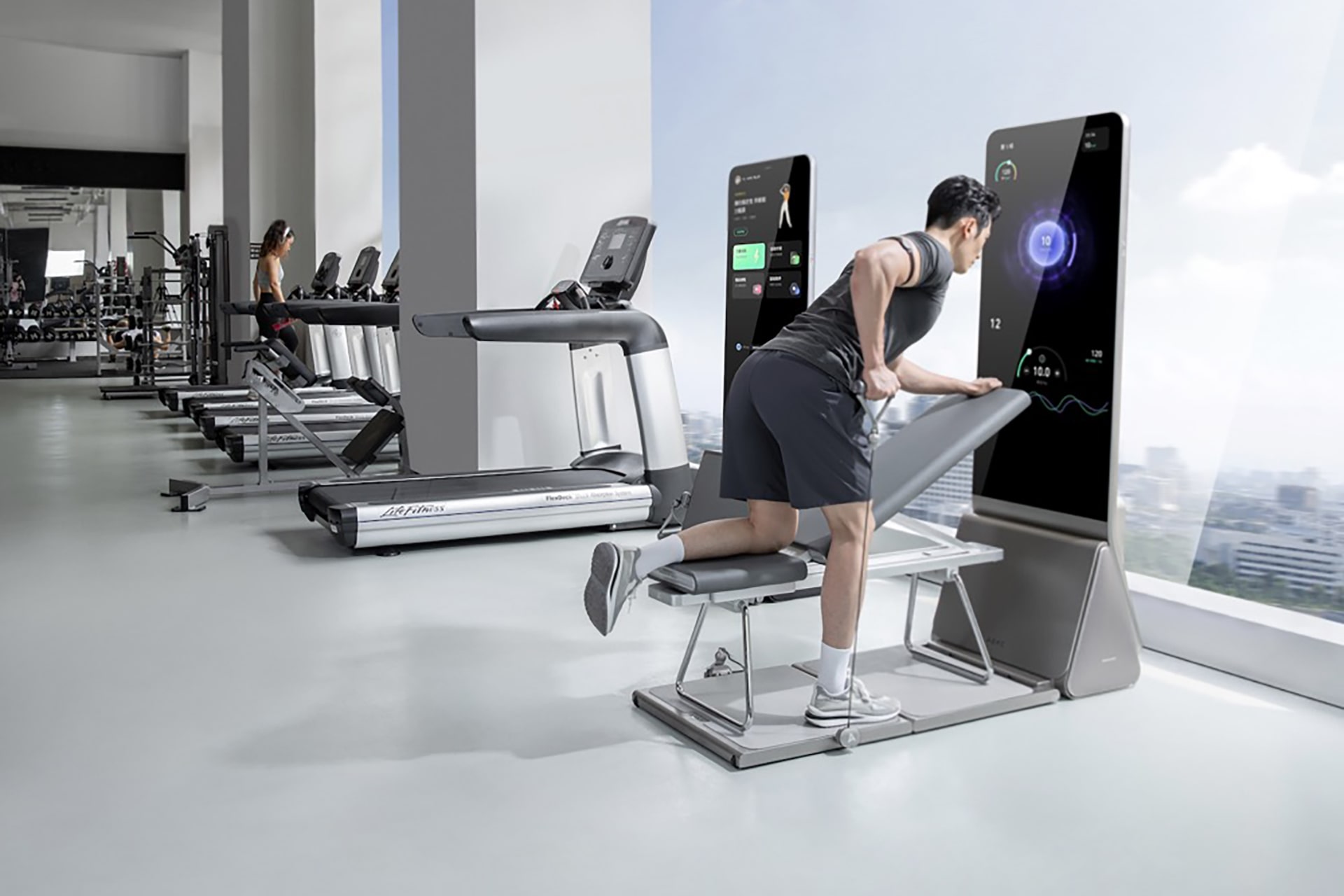Loong, an entrepreneur born in the 1980s, is an avid outdoorsman. That hasn’t stopped him from building a business around indoor fitness machines that retail for RMB 23,000 (USD 3,220) and generate monthly revenue in the seven-figure RMB range.
The market for conventional fitness gear—treadmills, stationary bikes, yoga mats, and dumbbells—has seen little innovation. Treadmills still rely on repetitive belt mechanisms, while stationary bikes offer only minor variations in pedaling.
Annual growth in the segment has remained slow, typically in the single digits. According to Research and Markets, the global fitness equipment market grew at a compound annual growth rate (CAGR) of just 5.3% from 2020–2027.
That began to shift around 2022.
Interest in home workouts surged, driving demand for at-home fitness equipment. At the same time, younger consumers began seeking personalized, tech-enabled exercise solutions.
According to 36Kr, a McKinsey report estimates the global digital fitness market could exceed USD 80 billion by 2025. The US is expected to account for 40–50% of that total, followed by Europe at 30%. The Asia Pacific region, led by China and Japan, also shows strong potential.
It was during this inflection point that Loong and several former colleagues began exploring startup ideas.
After work, many young people default to passive screen time, scrolling on phones or watching television. But the team observed a lack of active content in the home entertainment space. Most options were still screen-based, offering little variety in engagement.
This raised a fundamental question: could home life accommodate something more than rest or entertainment?
While the wearables market was saturated, the team identified a gap in large-scale smart fitness equipment. The category required technical expertise and had room for innovation, yet it remained overlooked by major players, making it an appealing space for a startup.
“China still doesn’t have a dominant brand in the indoor fitness equipment space,” Loong told 36Kr. “When it comes to smartphones, people think of Apple, Huawei, or Oppo. But in fitness, there’s no brand with that level of awareness. That gives us room to grow.”
That insight led to the creation of Aeke, a startup focused on smart home fitness designed around short, flexible workouts. The company launched with a hybrid hardware-software product tailored to strength training and pilates, with added features for yoga and cardio.
Aeke went commercial in 2024, debuting its “Smart Home Gym K1” on Kickstarter. In just over a month, it raised more than RMB 15 million (USD 2.1 million).
Early backers paid USD 2,200, while the K1 now retails for USD 3,299. The company currently ships several hundred units per month in China.

Targeting the premium market
At the start of development, Aeke posed two key questions to its supply chain partners.
At the time, smart fitness devices—especially workout mirrors—were selling for RMB 3,000–10,000 (USD 420–1,400), while premium brands like Technogym and Mirror priced products above RMB 15,000 (USD 2,100). The first question: could costs be halved through economies of scale?
That idea didn’t hold. Components such as high-resolution mirror displays, precision cameras, and time of flight (ToF) sensors remained expensive. Slim, mirror-like designs required specialized packaging, and motion-tracking chips added further cost. Custom manufacturing limited the benefits of scale.
The second question: was there enough margin?
With limited room to cut hardware costs, many companies turned to subscription models. Mirror, Hydrow, Peloton, and Tonal all charge monthly content fees in addition to hardware sales.
“This model might be viable in the US or Europe, but in China, users aren’t mentally prepared for it. It’s just not practical for a startup like us,” Loong said.
Other players tried to offset losses by selling complementary products, but that clashed with Aeke’s goal of building a flagship product under its own brand.
So the team pivoted. Instead of mirrors, Aeke focused on strength training. It developed a touchscreen device capable of simulating a wide range of gym equipment, offering a more interactive alternative to traditional home gear.
Positioned as a premium product, the K1 emphasizes minimalist design and portability. It features an aluminum alloy frame, anti-glare optical glass, and styling that appeals to both domestic and overseas buyers.
The device includes a 4K touchscreen, surround-sound speakers, and Aeke’s proprietary digital servo motor. It offers five force modes and, with smart accessories, can emulate multiple gym machines. Visual sensors and motor feedback enable a built-in “smart coach” to monitor and correct user form in real time.
Installation is another sticking point in home fitness.
Technogym, for instance, offers full-service installations, whether in-house or outsourced. That adds to costs. In addition, wall-mounting often involves drilling, which can damage interiors and trigger further expenses.
Aeke avoided that entirely. The K1 is mobile and installation-free, reducing friction for buyers and lowering costs. It occupies just 0.3 square meters, making it suitable for small apartments and younger consumers.

A coach that adapts with you
For users without an established workout routine, two questions matter: why exercise, and how to maintain consistency?
Even with clear goals like fat loss or muscle gain, staying on track is a challenge, especially for beginners.
As smart hardware becomes more standardized, companies must focus on the psychological factors that influence behavior. Aeke designed its system with emotional and motivational cues in mind.
The traditional personal training market suffers from quality inconsistencies. Many trainers are certified through short programs, resulting in variable experiences and limited trust.
To address this, Aeke tapped artificial intelligence to build its own coaching system that delivers end-to-end guidance: before, during, and after workouts.
Before a session begins, the AI coach conducts a full assessment using Aeke’s proprietary algorithm, evaluating users’ physical and health data to enable personalized programming.
Based on this input, the system generates custom training and nutrition plans, spanning 21 days to three months. These can focus on posture correction, fat loss, or dietary improvement.
Aeke has also created original course content in-house, produced by a team of trainers, yoga instructors, and nutritionists. Each lesson costs more than RMB 20,000 (USD 2,800) to produce and is included free with the device.
During workouts, the AI coach monitors form, flags errors via voice or text, and adjusts programming based on real-time performance data.
Localization is also key. Aeke provides distinct training systems for Asia Pacific and Western markets. Programs in Asia focus on progressive basics, while Western versions emphasize intensity and functional movement.
The user interface reflects these cultural differences. In China, where 90% of users are women aged 35–50, the app features a pastel palette and smooth navigation. In overseas markets, where men in the same age group dominate, Aeke opts for an industrial look and data-centric design. In Europe, dashboards highlight real-time metrics and visualized progress charts.
“Selling a product is only the beginning,” Loong said. “We aim for zero operational burden, and that means any user in any market should be able to unpack the product and get started, with no additional support or customization needed.”

AI also powers Aeke’s international expansion.
To enter new markets, the company localizes course content into languages like German, French, Japanese, and Arabic at a fraction of traditional costs. These experiments can be executed for a few hundred thousand RMB. Deeper localization only follows successful pilots, minimizing upfront risk.
36Kr has learned that Aeke is accelerating its global push, beginning with the US. From there, it plans to expand across North America and Europe, targeting overseas revenue of more than RMB 100 million (USD 14 million) by 2025.
In the competitive landscape of hardware startups, differentiation is essential. Aeke’s focus on a niche, fast-growing segment has helped it gain early traction, and could offer a playbook for other founders.
While these verticals may involve technical complexity, they remain overlooked by major players, providing fertile ground for innovation.
KrASIA Connection features translated and adapted content that was originally published by 36Kr. This article was written by Huang Nan for 36Kr.
